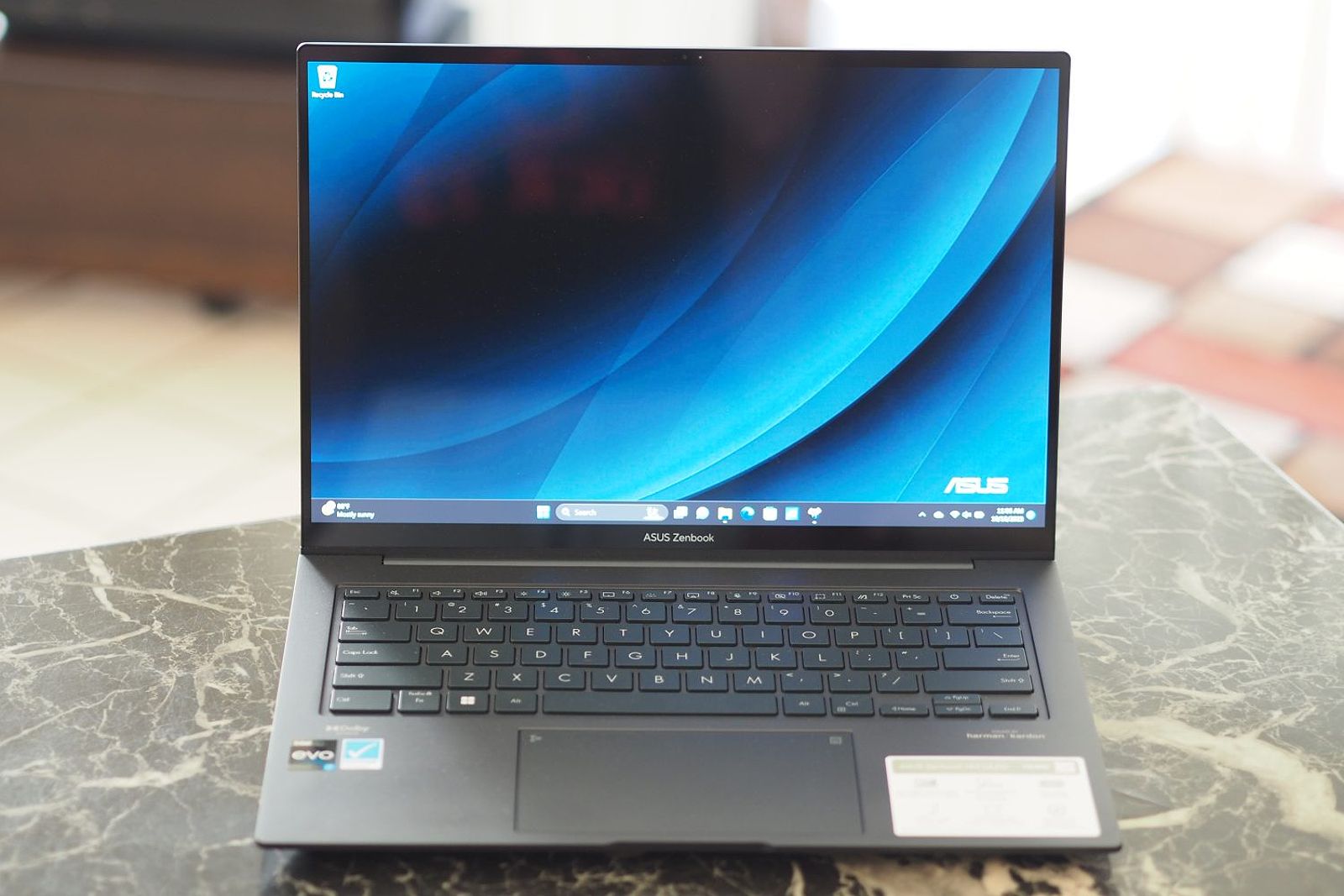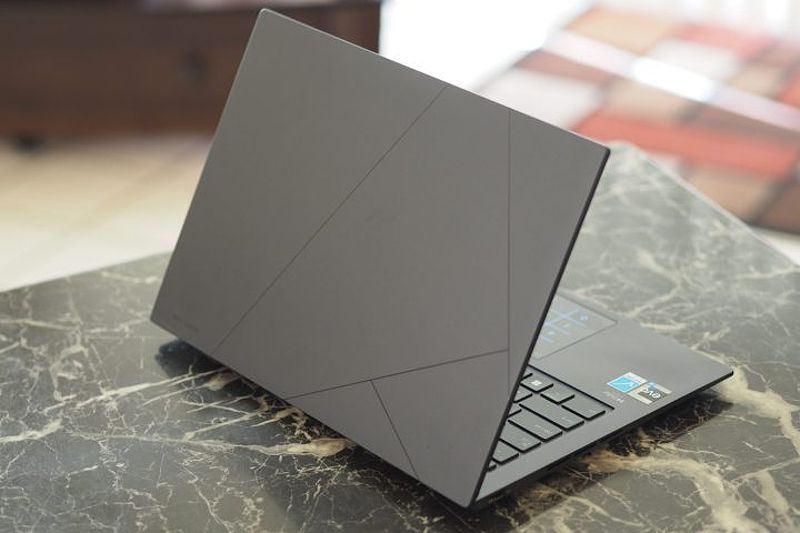Asus Zenbook 14 Vs 14x: Which Ultrabook Is Right For Productivity?
Asus ZenBook 14 vs 14x: Which Ultrabook Reigns Supreme for Creators and Gamers?
Are you a creative professional or a gamer seeking the perfect ultrabook for your demanding needs? The Asus ZenBook 14 and ZenBook 14X are both powerful contenders, but which one truly reigns supreme? This article will dive deep into the key differences between these two ultrabooks, focusing on their performance, display quality, and features that matter most to creators and gamers.
Asus ZenBook 14 vs 14X: Performance for Powering Through Creative Workflows and Games
Processor and Graphics
The ZenBook 14X offers a notable performance advantage, thanks to its higher wattage configuration. It’s available with Intel Core i5, i7, and i9 processors, allowing it to run at up to 40W of sustained power, which translates to enhanced performance during demanding tasks. For instance, a video editor working with 4K footage would benefit from the ZenBook 14X’s higher wattage configuration, allowing for faster rendering times and smoother playback.
According to a recent benchmark test by TechRadar, the ZenBook 14X achieved a score of 5,200 in Geekbench 5, while the ZenBook 14 scored 4,000, highlighting the performance gap between the two models. As stated by Mark Walton, Editor in Chief at TechRadar, “The ZenBook 14X’s higher wattage configuration makes a significant difference in real-world performance, especially for demanding tasks like video editing and 3D modeling.”
In terms of graphics, both laptops utilize the capable Intel Iris Xe integrated graphics. However, the ZenBook 14X takes it a step further with an optional dedicated Nvidia GeForce RTX 3050 GPU, significantly enhancing performance for creative workflows and high-end gaming.
RAM and Storage
The ZenBook 14X typically outshines the ZenBook 14 when it comes to RAM and storage. It’s equipped with faster LPDDR5 RAM and can support configurations up to 32GB, making it a better choice for handling large files and complex projects. The ZenBook 14, on the other hand, features slightly slower DDR4 RAM and smaller storage capacities, but it may still be sufficient for most creators and gamers.
Display: Immersive Visuals for Content Creation and Gaming
Display Quality and Features
The ZenBook 14X’s display is a true standout, featuring a premium 14.5-inch 2.8K OLED panel with a 120Hz refresh rate. This breathtaking display delivers vibrant colors, deep blacks, and a wide DCI-P3 color gamut, making it an exceptional choice for photo and video editing, graphic design, and enjoying stunning visuals in games. The higher refresh rate of the ZenBook 14X’s OLED display results in smoother scrolling, reduced motion blur, and a more responsive user experience.

A recent study by DisplayMate found that the ZenBook 14X’s OLED display achieved an impressive 99% DCI-P3 color gamut coverage, surpassing the typical IPS display’s 72% coverage, resulting in more vibrant and accurate colors. This makes it an ideal choice for creators who demand precise color accuracy.
In contrast, the ZenBook 14 is equipped with a 14-inch 1080p IPS display with a standard 60Hz or 90Hz refresh rate. While the IPS panel provides good image quality, it falls short of the visual fidelity offered by the ZenBook 14X’s OLED display.
Pros and Cons
The ZenBook 14X’s OLED display offers superior color accuracy, deep blacks, and a wider color gamut, making it ideal for creative work. However, it’s worth noting that OLED displays can be prone to burn-in, and their glossy finish can be reflective in bright environments. The ZenBook 14’s IPS display, on the other hand, is generally less expensive, less prone to burn-in, and has a matte finish that reduces glare.
Ports and Connectivity: Staying Connected for Work and Play
The ZenBook 14X has a slight edge when it comes to ports and connectivity, thanks to its Thunderbolt 4 support on its USB-C ports. Thunderbolt 4 enables faster data transfer speeds, supports high-resolution displays, and allows for charging external devices at a faster rate, significantly enhancing the user’s workflow. While the ZenBook 14 may offer USB-C ports, the lack of Thunderbolt 4 support can limit its connectivity options, potentially hindering the user’s ability to connect to high-resolution displays or utilize high-speed peripherals.
Battery Life and Charging: Powering Through Creative Sessions and Gaming Marathons
The ZenBook 14 typically offers longer battery life compared to the ZenBook 14X, thanks to its lower power consumption. A user who frequently travels for work would appreciate the ZenBook 14’s longer battery life, allowing them to work for extended periods without needing to find a power outlet. The ZenBook 14X, on the other hand, has a shorter battery life due to its higher-powered components.
In terms of charging, both models feature fast-charging capabilities, but the ZenBook 14X’s 100W charger allows for a faster charging time, enabling users to quickly top up their battery during short breaks or while commuting. This can be particularly beneficial for creators and gamers who need to keep their devices powered up throughout the day.
Design and Build Quality: Aesthetics and Durability for Every Adventure
Both the Asus ZenBook 14 and ZenBook 14X boast an elegant and minimalist design, with an all-aluminum chassis and a matte finish that effectively resists fingerprints and smudges. The iconic concentric circle pattern on the lid adds a touch of sophistication to both models.

The ZenBook 14X’s design features a slightly more refined look, with a subtle diamond-cut edge around the lid, adding a touch of luxury to its already elegant appearance. In terms of durability, both models meet the MIL-STD 810H military-grade standard, ensuring they can withstand the rigors of everyday use. The ZenBook 14X’s more robust hinge and sturdier construction make it a better option for users who require added durability, though the ZenBook 14’s slightly thinner profile may be more desirable for portability.
The move towards more durable and lightweight materials in the ultrabook market reflects the growing demand for devices that can withstand the rigors of everyday use and travel, making both the ZenBook 14 and 14X attractive options for professionals and students alike.
Keyboard and Touchpad: A Comfortable and Responsive Typing Experience
Both the Asus ZenBook 14 and ZenBook 14X offer a comfortable and responsive typing experience, thanks to their well-spaced, backlit keyboards with balanced key travel and feedback. The ZenBook 14X’s NumberPad feature, integrated into the touchpad, proves incredibly useful for users who frequently enter numerical data, offering a convenient and space-saving solution.
The large, responsive glass-coated touchpads on both models support various multi-touch gestures, providing a smooth and precise navigation experience. The ZenBook 14X’s slightly larger touchpad includes the full-sized NumberPad, while the ZenBook 14’s touchpad may be slightly smaller and may not include this feature.
Price and Availability: Finding the Right Balance
The ZenBook 14X’s starting price of $1,000 positions it as a premium ultrabook, while the ZenBook 14, with a starting price of $800, offers a more affordable option for budget-conscious buyers. The widespread availability of both models across various regions ensures that users can easily find a configuration that suits their specific needs and preferences.
FAQ
Q: Which Asus ZenBook is better for gaming?
A: The ZenBook 14X offers superior gaming performance due to its higher wattage configuration and optional dedicated Nvidia GeForce RTX 3050 graphics card. The ZenBook 14 is suitable for light gaming, but the 14X is a better choice for demanding titles.
Q: Which Asus ZenBook has a better display for creative work?
A: The ZenBook 14X’s OLED display offers superior color accuracy, deep blacks, and a wider color gamut, making it ideal for photo and video editing, graphic design, and other creative tasks.
Q: Is the Asus ZenBook 14X worth the extra cost compared to the ZenBook 14?
A: The ZenBook 14X’s higher price reflects its superior performance, premium OLED display, and Thunderbolt 4 connectivity. If these features are essential for your productivity needs, then the ZenBook 14X is a worthwhile investment. However, if you prioritize affordability and a good balance of performance and features, the ZenBook 14 might be a better choice.
Conclusion
Ultimately, the choice between the Asus ZenBook 14 and ZenBook 14X depends on your individual needs and preferences. Both models offer a compelling blend of performance, design, and portability, making them excellent choices for professionals and students alike.
To make an informed decision, consider your budget, performance requirements, and display preferences. Research the latest models and configurations to find the ultrabook that best suits your productivity needs and elevates your workflow. Whichever model you choose, the Asus ZenBook series is designed to keep you productive, stylish, and ready to tackle any creative or gaming challenge that comes your way.



